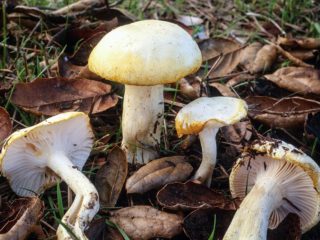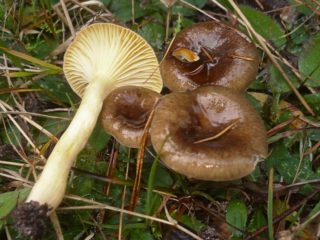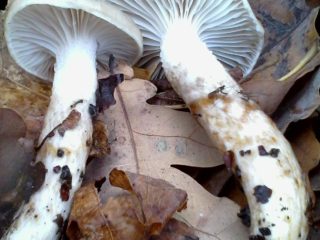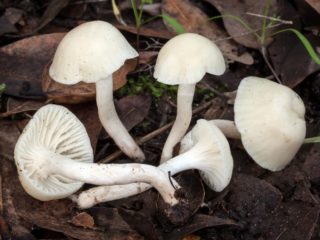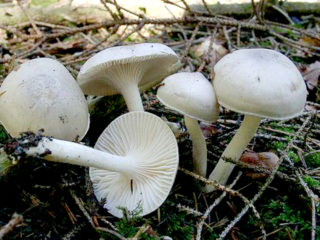Content
Hygrophorus yellowish-white is a lamellar mushroom that belongs to the Hygrophoraceae family of the same name. It prefers to grow in moss, in which it “hides” up to the cap. You can also hear other names for this species: cowboy handkerchief, wax cap. And in official mycological reference books it is listed as Hygrophorus eburneus.
What does yellowish-white hygrophore look like?
It has a classic fruiting body shape. The size of the cap in diameter ranges from 2 to 8 cm. At the initial stage of growth, the upper part is hemispherical, then takes the shape of a wide bell with the edge turned inward. And when ripe it becomes prostrate with a tubercle in the center.The surface of the cap is white, but as it matures it turns slightly yellow. Also, when ripe, pale rusty spots may appear on it.
On the reverse side of the cap, the yellowish-white hygrophore has narrow, sparse plates descending onto the stalk. They are identical in color to the top of the mushroom. Spores are ellipsoid, colorless. Their size is 9 x 5 microns.
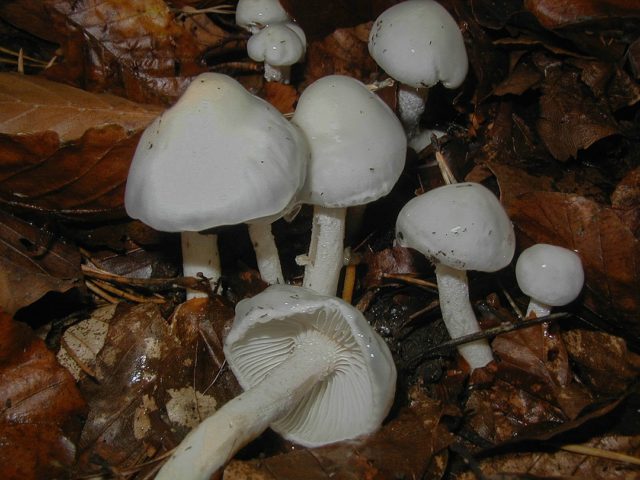
The upper part of the yellowish-white hygrophore is covered with a thick layer of mucus, which makes collection difficult
The leg is cylindrical, slightly narrowed at the base. The lower part is straight, but in some specimens it may be curved. The structure is dense, fibrous. The color of the leg is white; scaly belts can be seen on the surface.
The pulp is snow-white; the color does not change upon contact with air. Has a faint mushroom smell. The structure of the pulp is delicate; it breaks easily with slight impact, so it does not tolerate transportation well.
Where does the yellowish-white hygrophorus grow?
Yellowish-white hygrophorus is widespread in Europe, North America and Africa. Grows in deciduous forests and mixed plantings. Prefers to settle near hornbeam and beech. In most cases it grows in numerous groups, but also occurs singly.
Is it possible to eat hygrophor yellowish-white
This species is considered edible and in terms of taste belongs to the third category. Yellowish-white hygrophor can be consumed fresh or after processing. Adult specimens are recommended to be fried, boiled, and used for making sauces. Young fruits are best suited for pickling and pickling.
False doubles
In terms of external features, the yellowish-white hygrophore is similar to other species. Therefore, in order to be able to recognize doubles, you should know their characteristic differences.
Hygrophorus virgineus or Hygrophorus virgineus. It is a conditionally edible double, but in terms of taste it is significantly inferior to its relative. The diameter of the upper part reaches 5-8 cm. It is white, but when ripe the center may acquire a yellowish tint. The fruiting period begins at the end of summer and lasts until the second half of September. It grows in numerous groups in meadows along paths and clearings. The official name is Cuphophyllus virgineus.
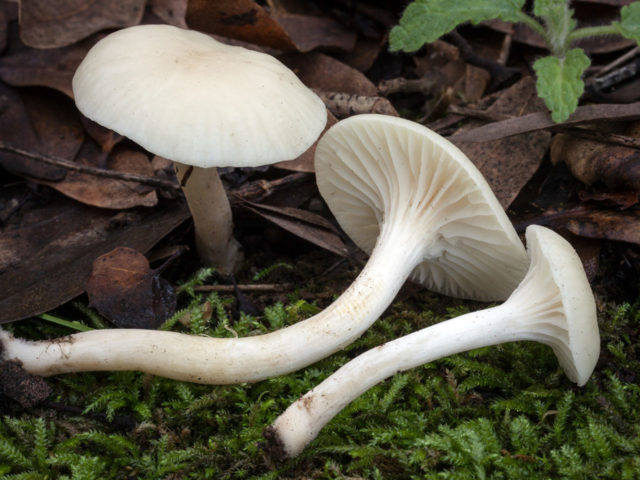
The main difference between the maiden hygrophorus is that its cap remains dry even in conditions of high humidity.
Limacella oiled or coated. A little-known edible mushroom of the Amanita family. The diameter of the top is 3-10 cm, its shade is white or light brown. The surface of the top and bottom is slippery. The plates are white and pink. The pulp exudes an oily smell similar to perfume. It is recommended to eat dried or fried. The official name is Limacella illinita.
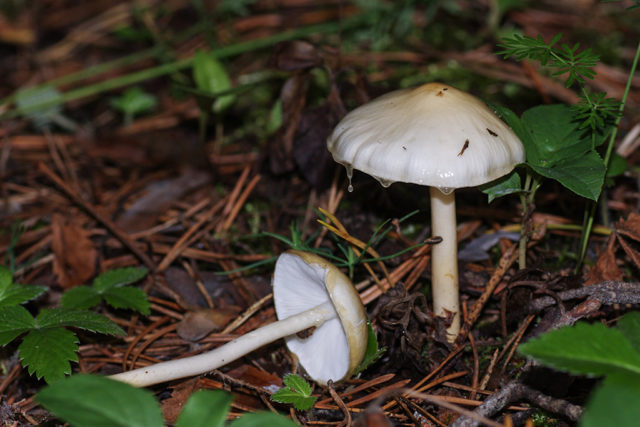
Limacella oil prefers to grow in conifers
Rules for collection and use
The fruiting period of the yellowish-white hygrophorus begins in August and continues until late autumn until frost occurs. Due to the fragile structure, you need to collect it carefully and put it in the basket with the cap down. When collecting fruits, it is important to cut them off carefully at the base so as not to disturb the integrity of the mycelium.
This species has a pleasant sweetish taste, so it can be cooked independently, as well as in combination with other mushrooms.
Conclusion
Yellowish-white hygrophor contains a large number of biologically active substances, including fatty acids. Thanks to this, it has antifungal and bactericidal properties. This species is not only useful, but also in its nutritional value is not inferior to honey mushrooms. But many lovers of quiet hunting avoid it, since in appearance it looks very much like a toadstool.
